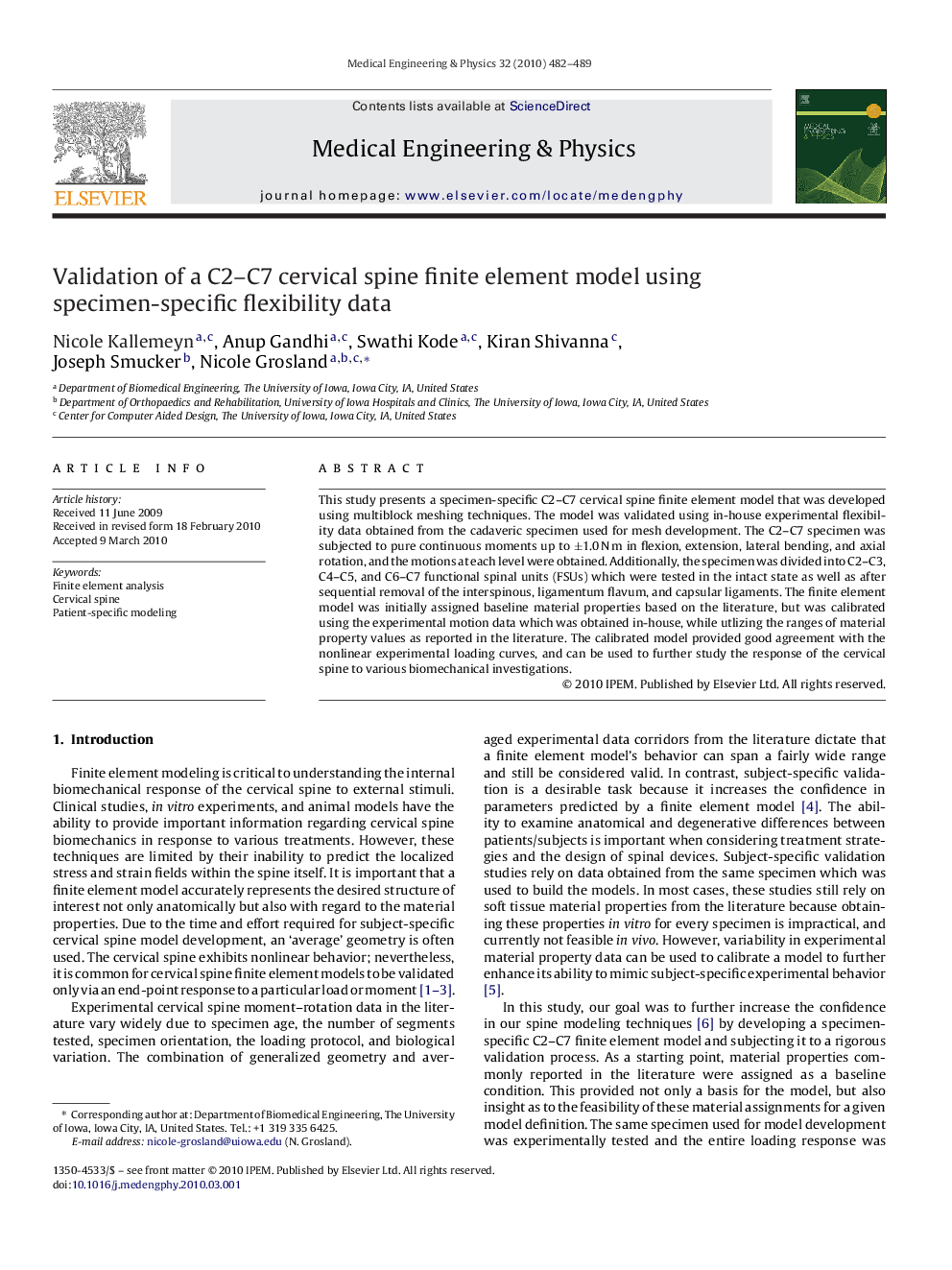| Article ID | Journal | Published Year | Pages | File Type |
|---|---|---|---|---|
| 876676 | Medical Engineering & Physics | 2010 | 8 Pages |
This study presents a specimen-specific C2–C7 cervical spine finite element model that was developed using multiblock meshing techniques. The model was validated using in-house experimental flexibility data obtained from the cadaveric specimen used for mesh development. The C2–C7 specimen was subjected to pure continuous moments up to ±1.0 N m in flexion, extension, lateral bending, and axial rotation, and the motions at each level were obtained. Additionally, the specimen was divided into C2–C3, C4–C5, and C6–C7 functional spinal units (FSUs) which were tested in the intact state as well as after sequential removal of the interspinous, ligamentum flavum, and capsular ligaments. The finite element model was initially assigned baseline material properties based on the literature, but was calibrated using the experimental motion data which was obtained in-house, while utlizing the ranges of material property values as reported in the literature. The calibrated model provided good agreement with the nonlinear experimental loading curves, and can be used to further study the response of the cervical spine to various biomechanical investigations.
